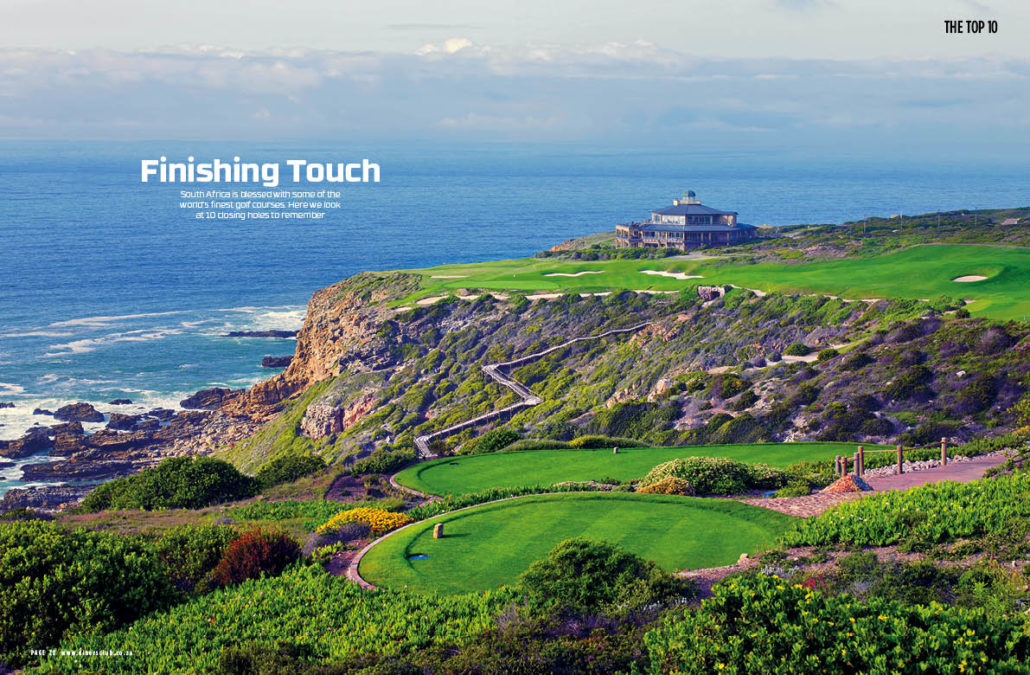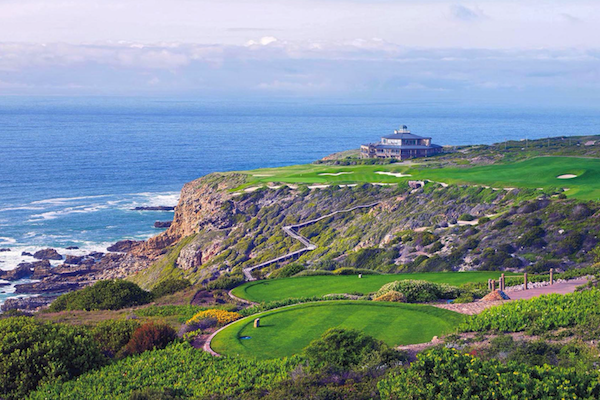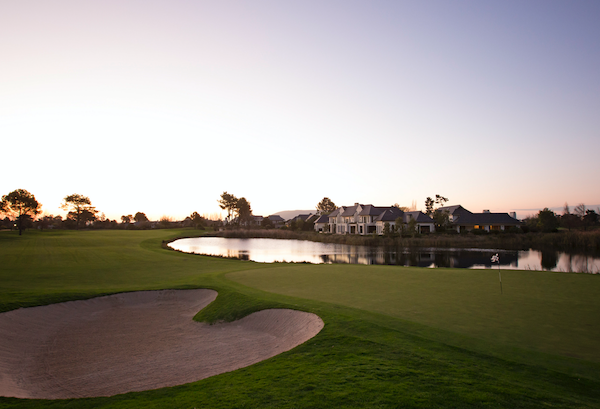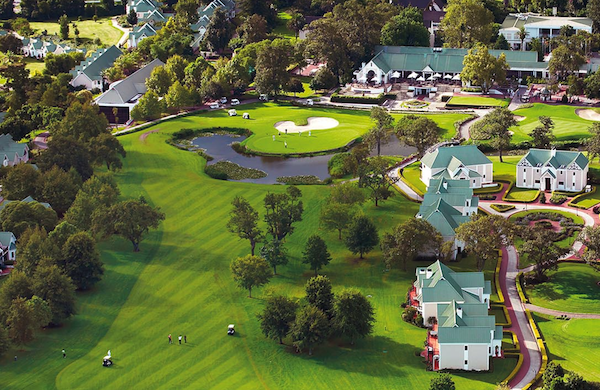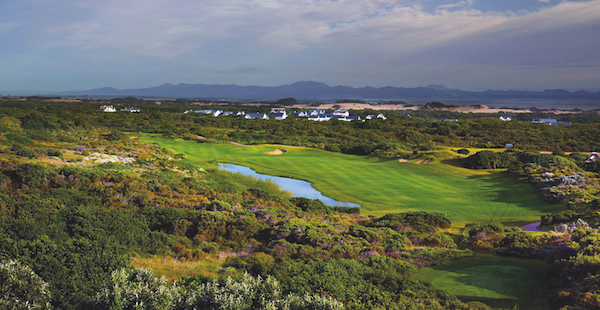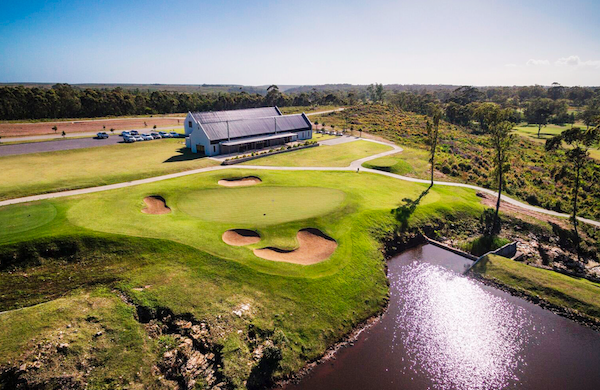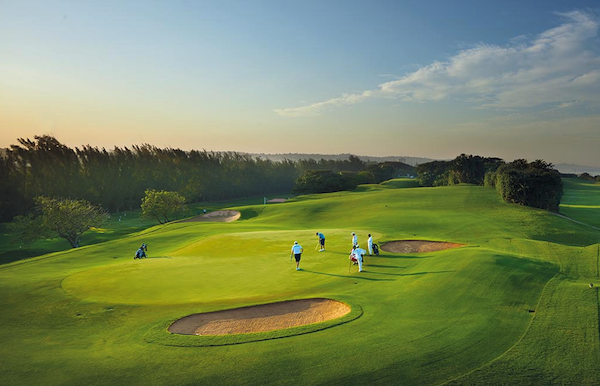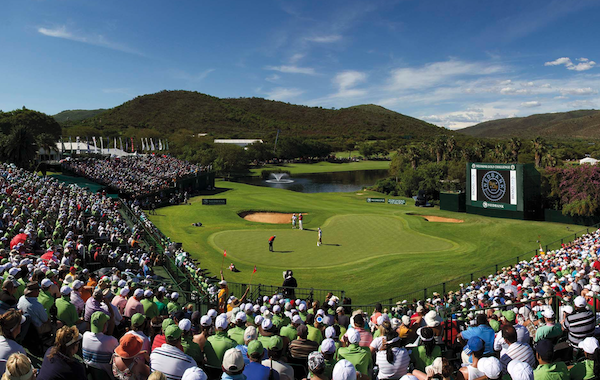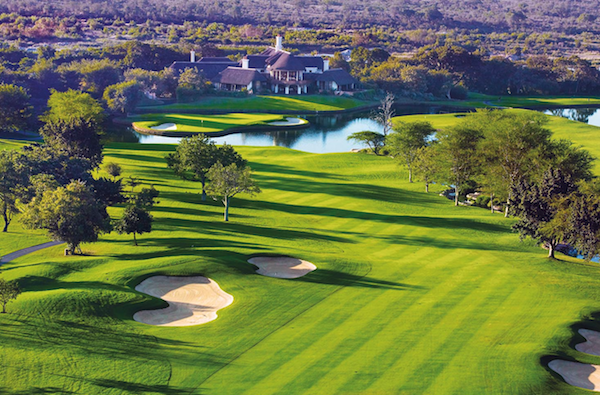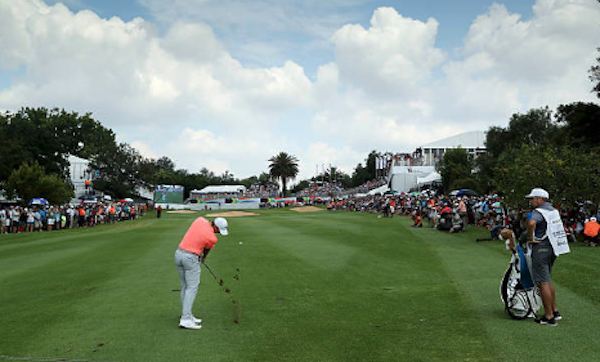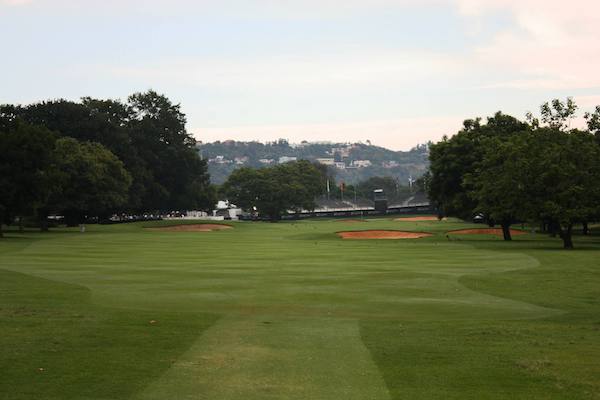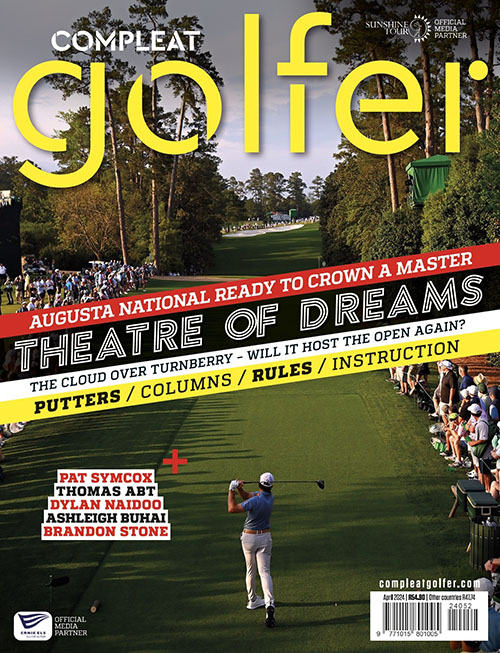We highlight 10 of the best finishing holes in South Africa that will make your golfing experience that much more enjoyable.
If you have played any of these holes, you’ll know why they are here. If you haven’t, stick them on your bucket list.
Pinnacle Point Golf Course
Par five, 463m
Designed by well-known golf architect Peter Matkovich and opened in 2006, this award-winning golf course has a challenging layout and breathtaking terrain. The course offers 7km of fairways and 80 bunkers, with the Indian Ocean as the only water hazard. The 18th at Pinnacle Point is a finishing hole that’s difficult to forget. It plays along the cliffs of Eden Bay. Its features are the 300m-long bunker down the left of the hole, which is to be avoided at all costs, and the aggressive slopes from right to left all the way down this hole. It was designed to offer the golfer choices – a good drive for the longer hitter leaves you with a few risky options on reaching the green in two. A drive to the right half of the fairway is crucial. The final approach towards the green is downhill and offers the golfer a good option to roll the ball on to the green.
Pearl Valley Golf Course
Par four, 386m
Situated just 45 minutes outside Cape Town, this Jack Nicklaus signature golf course was officially opened in 2003 by the man himself and fellow golfing legend Gary Player. The championship course has won several awards since. The lush fairways, exceptional bunkering and clever use of water features are all trademarks of this iconic golfer’s designs. Pearl Valley offers golfers a stern, yet enjoyable test and is undoubtedly one of those courses with a mystical aura.
The first 17 holes will leave an indelible mark in your golfing memory bank, with the 18th making the experience even more memorable. This monstrous par-four of 386m, with a tight fairway and a green wedged between water on the left and a deep, imposing bunker on the right, requires a well-struck drive. This will leave you with a long-iron to the smallish green and a respectable par if the sloping green can be negotiated in two.
Fancourt, Montagu
Par five, 451m
Originally designed by Gary Player, Montagu is one of three courses on the magnificent Fancourt estate. A redesign in 2005 by David McLay Kidd helped to elevate this course to one of South Africa’s top places to play. Exquisitely conditioned to provide a captivating golfing experience, the tree-lined course covers large tracts of varying terrain on rolling land. The 18th at Montagu is a great risk and reward par-five for the longer hitters, and an intimidating approach for most golfers. With this type of layout, it is important to leave a fuller shot into the green. The connection is crucial because, like the 17th, this hole includes a carry over a pond.
St Francis Links
Par four, 383m
There is an authenticity to the Eastern Cape’s St Francis Links that comes from its ever-changing moods and layout, combining every element of shot-making with its undulating terrain and testing greens, which are complemented by classic links-style bunkers. The collaboration between the Jack Nicklaus design team and Golf Data has produced a wonderful marriage between course construction and Mother Nature. Since its opening in 2006, St Francis Links has been considered as close to a ‘real’ links experience as any found outside Scotland or Ireland. The closing hole is a final reminder by the course designer that fortune favours the brave. The more you bring the water down the left side into play, the shorter your approach. And you don’t want a long-iron into this elevated, well-bunkered green.
Wedgewood Golf Course
Par five, 453m
The original course was designed by Bob Grimsdell in the late-1940s, but underwent a rebuild before it was reopened in late 2013. Now part of an estate, bushbuck and duiker have the freedom of the course with a variety of birdlife, including fish eagles, owls and kingfishers, regularly spotted. The 18th hole is a tough beast to tame, despite being a relatively short par five by modern standards. The drive is played to a slightly slanting fairway from left to right, with a dense blue gum forest waiting to catch any tee shot which veers too far right. The hole’s main defence is the large water hazard which protects the green, which plays a club shorter as it sits lower in the valley. Shorter hitters will need to place an accurate lay-up as close to the 100m mark as possible before attempting to pitch the green. The longer hitters will have the option of a risk and reward second shot that needs to carry all the way there and leaves all scoring options available on the last hole.
Durban Country Club
Par four, 250m
A combination of lush coastal vegetation, sand dunes and stunning views of the Indian Ocean makes this course unique, and one of the most challenging in the world. Offering a typical links layout, the coastal sand dunes on which the course is built offer an interesting and sometimes difficult round to the amateur and pro golfer alike. The 18th is a great finish to a championship course where anything can happen. There’s a drop-off on the right side, bush on the left, and the clubhouse right behind. On a good day the green is drivable, which sets up the chance to putt for an eagle-two. On a bad day, you’ll be fortunate to come away with a bogey. Miss the green to the right and you’re in deep trouble. Make sure you stay on the left of the fairway.
Gary Player Country Club
Par four, 459m
The Gary Player CC course occupies a special place in the minds of every South African amateur golfer. Since 1981, generations of this country’s golfers have watched the world’s leading professionals play this course with its feared kikuyu rough and mercurial, clover-shaped greens. To the majority of weekend golfers in South Africa, it is bucket-list material. The par-four 18th hole is a great amphitheatre during the Nedbank Golf Challenge, with the crowds right around it. The tee shot must lay up short and right of the water, leaving a long second to an undulating green protected front right and left by bunkers. Ensure enough club is used, as this shot is longer than it seems. The target can look extremely intimidating on this dogleg-left closing hole.
Leopard Creek
Par five, 495m
Leopard Creek golf course has one of the most interesting settings in South Africa. Extensive use has been made of water features, and sightings of crocodile, hippo, antelope, buffalo and elephant are commonplace on the course or in the Kruger Park bordering the course. The finishing hole is one that Gary Player is especially proud of. This downhill par five is bunkered on the left and right of the landing area, catching any errant drives. A terraced area some 200m out from the green facilitates opportunities for the long hitters to go for the green in two. The island green, with bunkers left and right and steep sloping banks that will send wayward approaches into the surrounding water awaits the brave. A mid-iron second sets up a challenging third shot to the green. The magnificent clubhouse forms the backdrop to this hole and its lake is also home to the occasional crocodile.
Glendower Golf Club
Par four, 391m
With a proud history dating back to 1935, Glendower has hosted many of the country’s flagship tournaments, including the South African Open, which was won in 2017 by Graeme Storm. Accuracy is key at this exquisitely designed, highly-ranked parkland golf course in Johannesburg, which is said to be a test for the world’s best golfers. It boasts kikuyu fairways with 64 bunkers and water hazards on 11 of the 18 holes. The par-four 18th has two fairway bunkers encroaching down the right side of the fairway, so the drive is best kept left. A good tee shot will leave you with a mid- to long-iron into the green, which is undulating and protected by bunkers on both sides and at the front.
Royal Johannesburg & Kensington (East)
Par five, 468m
The East Course is a championship layout that is home to the Joburg Open, which has been played here every year since the inaugural event in 2007. The East and West courses have a tree-lined, parkland layout with gentle undulations rather than abrupt slopes, which are sure to expose any weaknesses in your short game. The back nine boasts an abundance of water hazards, with larger ponds and a stream running through the lower part of the course. The par-five closing hole requires a drive struck down the left-hand side as the fairway slopes from left to right. Any shots hit too far right will find the bunkers or the trees, making the rest of the hole tough. Finding the fairway brings with it the likelihood of a good score.

